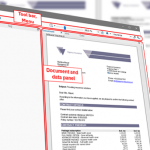Fusion Teams: Shared Mission for Greater Business Agility
Nearly everyone works with fusion teams – large and midsize enterprises alike. According to Gartner, ‘at least 84% of large and midsize companies, and 59% of government entities have already set up multidisciplinary fusion teams. At least 74% of organizations in industries that are traditionally subject to heavy regulation – have fusion teams.’
The traditional ‘order-based’ approach where business tells IT what to do, and IT goes off on its own to do so, may have been a stable and efficient way of working in the past, but now, slow and inflexible processes are proving unsuitable for today’s rapid pace of business change.
The increasing demand for customer experience (CX) and new digital services and channels call for new approaches – transition from traditional programming to configuration and adaptation, assembling and reassembling capabilities from inside and outside the enterprise, low-code development, and cross-functional teams of IT and business working together to deliver on the quest for business agility.
Today, the maximal speed to launch and complete digital initiatives, and deliver business value is achieved by multidisciplinary teams that blend technology and domain expertise – not IT alone.
Business and IT on a shared mission
Broader involvement of the business is the next logical step in the process of evolution started with Agile and putting business people on IT teams. Now, it is IT that is put on business teams to support a common goal.
Experience shows that with clearly defined governance, roles and tools different parts of the organization can be effectively engaged to contribute their share and work as one. Given the ability to compose their own experiences for internal and external customers, business stakeholders can be involved in multiple stages of the design and composition process. Some decisions that used to be made by IT as well as some work that, in the past, was performed by an IT team, are now done within the business units themselves.
The payoffs are substantial.
Organizations with business-IT collaboration and cross-functional fusion teams are much better positioned to respond faster and with greater confidence to unanticipated challenges. They are able to work effectively and switch direction fast while delivering business value – according to Gartner, ‘20% faster than their peers.’
Alone in the area of business communication we have seen organizations increasing daily communication production by 20x, saving +50% in time, and being able to quickly respond to new and changing business needs with business taking care of up to 95% of the overall business communication.
This doesn’t come as a surprise, then, if you enable business to take ownership of the business communication and let it design, change and sign-off communication components, templates and layouts in a controlled way, it can in return quickly react to customers’ demands, make changes and shorten the time-to-market, with underlying technology taking care of security, consistency and compliance.
Redistributing work and responsibilities along the business-IT continuum brings new potential and allows organizations to scale across the IT and business ecosystem to get work done.
There is no one-size-fits-all formula. Each organization has its own unique approach and its own mix of responsibilities, which may change as the business strategy changes. Fusion teams with the right mix of technical and business expertise will deliver faster, more cost-effectively, and move the company ahead of its competitors.
But three elements are key:
• The culture of the company has to change from competition to a shared mission
• The organization must provide governance, clearly defined responsibilities and incentives
• A strong technological fundament needs to be set up for the empowerment of the business and effective collaboration and innovation across business and IT
Learn more:
- Explore the Papyrus ‘Single Platform’ approach that connects teams across the enterprise with technology and tools for IT and business integrated in one collaborative environment.
- Check the Papyrus Business Designer tools implemented with multidisciplinary fusion teams in mind:
- The Business Designer for Business Correspondence used by the business to create and manage reusable components for document templates, text paragraphs, images, tables, composites, layouts and variable groups, including simulation and built-in release and version managementfor event & staff generated communications(Batch, On-demand and Interactive correspondence)
- The Business Designer for Capture used by the business to teach the machine to extract data from content
- The Business Designer for ACM used to define case and process flows (BPMN) – integrated with the Correspondence and Capture template components
- Further Out-of-the-Box frameworks for developers and professional document design and document capture tools for IT are provided for more advanced tasks. Please contact us for more information.
Senior Manager Brand Marketing
Vienna, Austria






